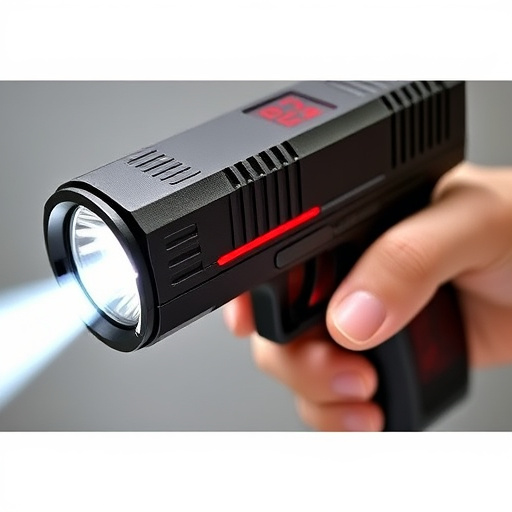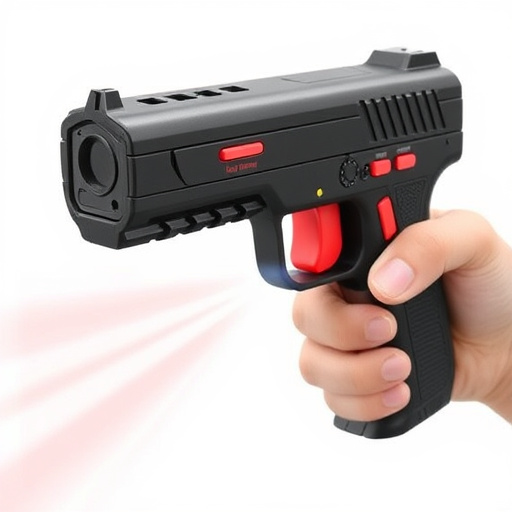Voltage penetration through thick clothing significantly impacts the effectiveness of slider stun guns. Thicker garments provide better protection due to increased resistance, making it harder for high-voltage shocks to reach critical points on the body's surface. Modern stun gun technologies, like the Slider Stun Gun's innovative sliding mechanism, can overcome these barriers, ensuring powerful and safe shocks even when targeting individuals wearing substantial clothing. Understanding this dynamic is crucial for personal safety, especially in high-risk scenarios where individuals might be hidden beneath multiple layers of insulating fabric.
Voltage penetration through thick clothing is a fascinating yet often overlooked aspect of electrical safety. This article delves into the intricate world of voltage, exploring its impact on various materials, especially thick fabrics. We’ll discuss how slider stun guns, modern tools designed for self-defense, utilize this principle. Additionally, we’ll cover safety considerations, potential risks, and real-world applications, providing insights into the practical implications of voltage penetration. By understanding these factors, individuals can make informed decisions regarding personal safety equipment like the slider stun gun.
- Understanding Voltage and its Impact
- How Thick Clothing Affects Penetration
- The Slider Stun Gun: A Modern Tool
- Safety Considerations and Risks
- Real-World Applications and Scenarios
Understanding Voltage and its Impact

Voltage, measured in volts, is a fundamental concept in electricity that represents the potential difference between two points in an electrical circuit. When applied to non-conductive materials like clothing, voltage can have varying effects depending on factors such as material thickness and conductivity. In the context of self-defense tools like slider stun guns, understanding voltage penetration through thick clothing is crucial for assessing their effectiveness.
A slider stun gun delivers a high-voltage electric shock designed to temporarily incapacitate a target by disrupting muscle control. The impact of this voltage depends on its ability to pass through the fabric barrier. Thicker garments generally offer more protection due to their increased resistance to electrical flow, making it harder for the voltage to penetrate and reach the body beneath. However, with advanced technologies and specific design considerations, modern stun guns can overcome these barriers, ensuring a powerful and effective shock even when targeting individuals wearing substantial clothing.
How Thick Clothing Affects Penetration

Thick clothing significantly influences the penetration depth of a slider stun gun’s electrical current. The material, density, and construction of the garment act as barriers, reducing the effectiveness of the stun device. This is because the electricity must travel through layers of fabric, which can insulate and disrupt the flow of current, thereby diminishing its impact on the target.
In cases where a person is dressed in multiple layers or heavy clothing, the electrical charge may struggle to reach the body’s surface or critical points, leading to a lessened stun effect. This phenomenon is crucial to understand for individuals carrying slider stun guns as personal safety devices, emphasizing that proper clothing choice can affect the weapon’s performance and overall ability to disable or subdue a potential threat.
The Slider Stun Gun: A Modern Tool

The Slider Stun Gun represents a modern innovation in personal safety devices, designed to address the challenges posed by thick clothing and other obstructions when it comes to delivering effective stun shocks. Unlike traditional stun guns that rely on direct contact or line-of-sight activation, the Slider Stun Gun employs a unique sliding mechanism that allows users to activate the device from a safe distance, while still ensuring a powerful electric discharge.
This advanced technology is particularly useful in situations where close proximity to a potential threat is not feasible, such as when dealing with aggressive individuals wearing heavy protective gear or multiple layers of clothing. By simply sliding the stun gun’s trigger mechanism, users can generate a strong electrical pulse capable of incapacitating an assailant without the need for direct contact, making it a versatile and reliable tool for personal protection in various environments.
Safety Considerations and Risks

When considering the penetration of voltage through thick clothing, safety must be the paramount concern. Carrying a slider stun gun or similar device can pose significant risks if not used properly. The effectiveness and power of these devices are designed to incapacitate through electric shock, but the impact on human tissue is not without potential harm. High-voltage outputs can lead to severe injuries, including burns, muscular damage, and in extreme cases, cardiac arrest.
Thick clothing, while effective at blocking physical forces, may not always insulate against electrical current. The thickness and material composition play a crucial role in determining the level of protection offered. Materials like cotton or denim are relatively insulating, but thick leather or other conductive fabrics can conduct electricity, allowing it to penetrate. Users should be aware of these variables and exercise extreme caution when employing stun guns in situations where clothing might not provide adequate electrical insulation.
Real-World Applications and Scenarios

In real-world applications, understanding voltage penetration through thick clothing is crucial for various scenarios, especially in high-risk environments where personal safety is paramount. For instance, law enforcement and security personnel often encounter situations that necessitate the use of non-lethal force tools like slider stun guns. These devices emit high-voltage electric currents designed to incapacitate individuals temporarily, making it essential to know how well the tool’s energy penetrates different types of clothing. Effective voltage transmission ensures the stun gun delivers its intended jolt, enabling officers to control and subdue suspects safely.
Moreover, this knowledge plays a significant role in military operations where soldiers might be dressed in protective gear or bulky fatigues. Proper understanding of voltage penetration allows commanders to select suitable non-lethal weapons and tactics for various missions, ensuring the safety of both troops and civilians. This is particularly relevant in close-quarters combat or when dealing with enemy combatants hidden beneath multiple layers of clothing.
In conclusion, understanding how voltage penetrates through thick clothing is crucial for both safety and real-world applications. As demonstrated, factors like garment composition and thickness significantly influence electrical passage. The modern Slider Stun Gun offers an effective solution for these scenarios, providing a non-lethal means of self-defense in situations where traditional tools may struggle. However, it’s essential to approach its use with caution, considering the risks outlined in our discussion. By staying informed and adhering to safety guidelines, individuals can leverage this technology responsibly, ensuring their well-being and the effectiveness of interventions in various critical situations.
